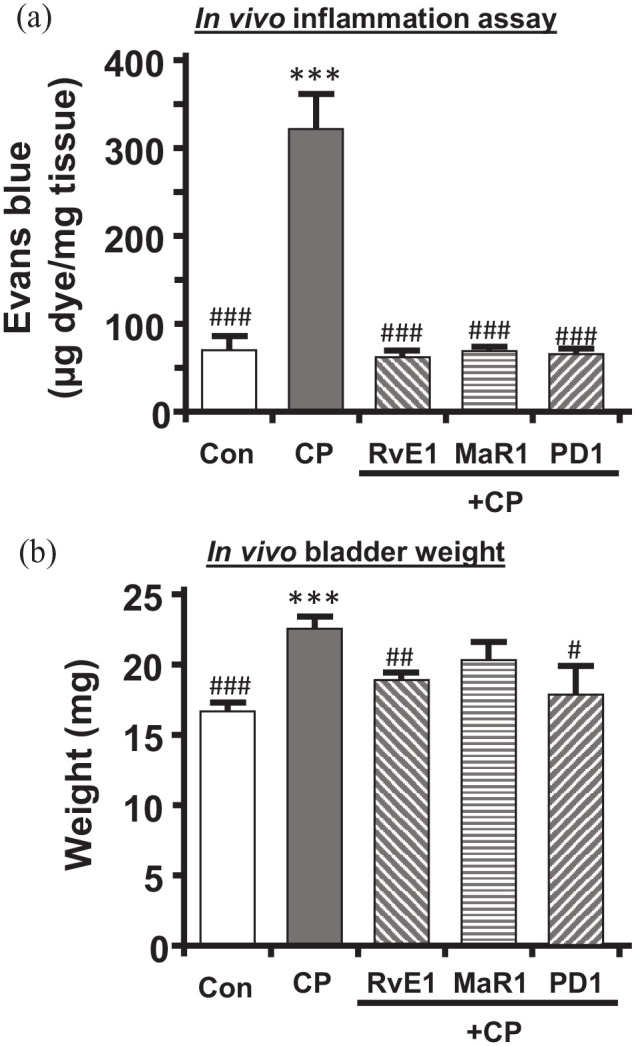Figure 5.

RvE1, MaR1, and PD1 reduce CP-induced in vivo bladder inflammation and weight gain: (a) bladder inflammation as measured by the Evans blue dye extravasation assay and described in the Methods section. Mice were subjected to the treatment paradigm shown in Figure 1. CP was administered at 150 mg/kg. SPMs used were RvE1, MaR1, and PD1, all at 25 µg/kg/injection. On Day 4, the mice were injected (i.v.) with Evans blue (25 mg/kg). 1 h later, bladders were removed, weighed, and placed in 1 mL formamide overnight (56°C). Absorbance (620 nm) was measured and results calculated from a standard curve. Results are the mean ± SEM. n = 10, 12, 5, 4, 4, respectively. ***p < 0.001 compared to control (Con – injected with saline and PBS only) by ANOVA and Student–Newman–Keuls. ###p < 0.001 compared to CP (CP – injected with CP and saline only) by ANOVA and Student–Newman–Keuls. (b) Bladder weights following the treatment paradigm depicted in Figure 1. At the end of the paradigm, bladders were removed for the various endpoints and weighed. Bladders from mice used for urodynamics were not included in the analysis. Results are the mean ± SEM. n = 19, 26, 15, 4, 4, respectively. ***p < 0.001 compared to control (Con – injected with saline and PBS only) by ANOVA and Student–Newman–Keuls. #p < 0.05, ##p < 0.01, ###p < 0.001 compared to CP (CP – injected with CP and saline only) by ANOVA and Student–Newman–Keuls.
